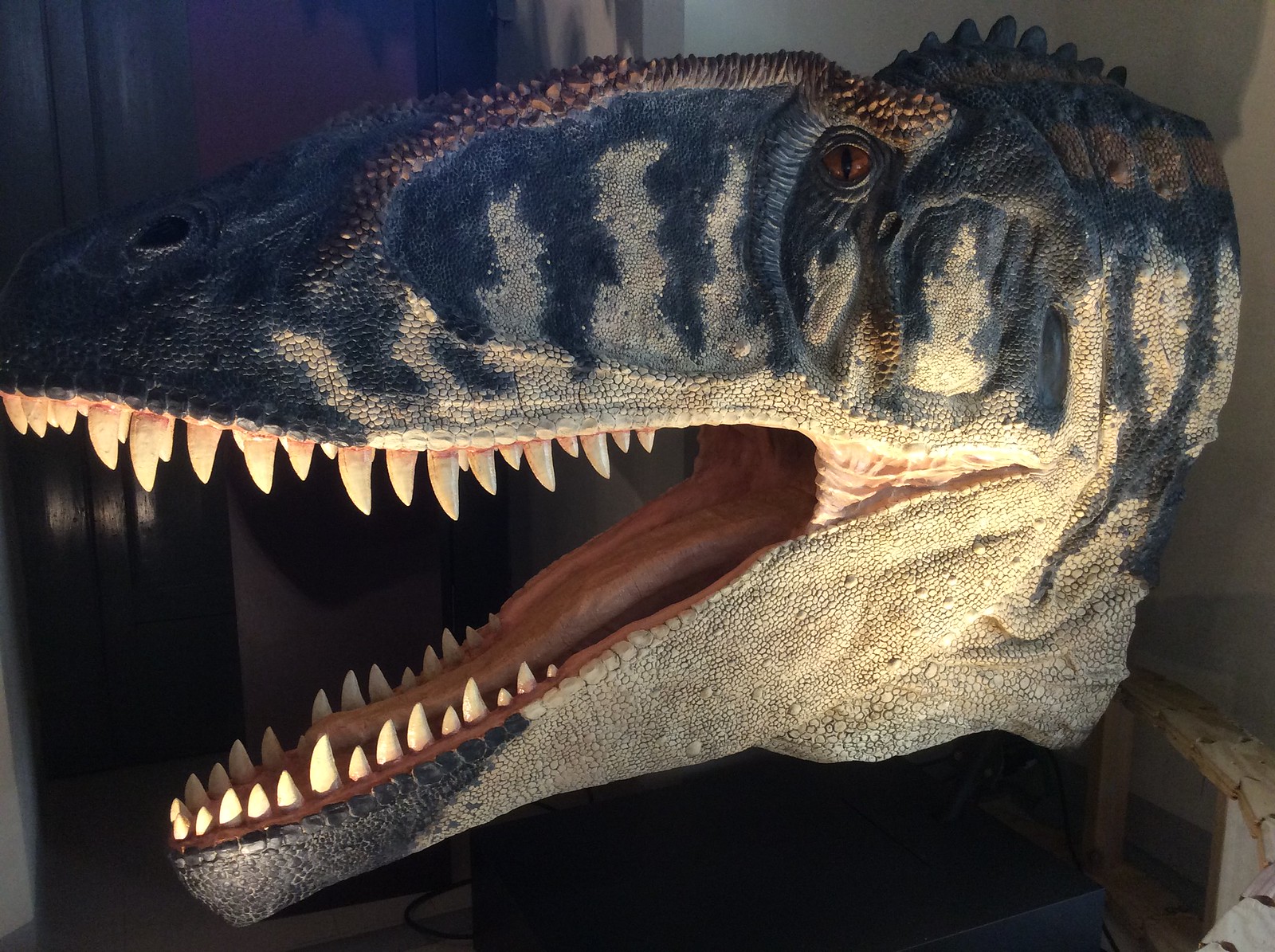Post by Godzillasaurus on Jun 3, 2014 3:37:38 GMT 5
Siamosaurus

Siamosaurus (meaning "Siamese lizard") is a genus of theropod dinosaur from Early Cretaceous Thailand. The size of the animal is unknown, but it may have reached a length of about 9.1 meters (30 ft). The type species, Siamosaurus suteethorni, was formally described by Buffetaut and Ingavat in 1986.[1] There is very little information on this Cretaceous meat-eater, but it is known from teeth that closely resemble those of Spinosaurus; it may have eaten fish.
Allosaurus

Allosaurus /ˌælɵˈsɔrəs/ is a genus of large theropod dinosaur that lived 155 to 150 million years ago during the late Jurassic period (Kimmeridgian to early Tithonian[1]). The name "Allosaurus" means "different lizard". It is derived from the Greek ἄλλος/allos ("different, other") and σαῦρος/sauros ("lizard / generic reptile"). Allosaurus was a large bipedal predator. Its skull was large and equipped with dozens of large, sharp teeth. It averaged 8.5 m (28 ft) in length, though fragmentary remains suggest it could have reached over 12 m (39 ft). Relative to the large and powerful hindlimbs, its three-fingered forelimbs were small, and the body was balanced by a long and heavily muscled tail. It is classified as an allosaurid, a type of carnosaurian theropod dinosaur. The genus has a complicated taxonomy, and includes an uncertain number of valid species, the best known of which is A. fragilis. The bulk of Allosaurus remains have come from North America's Morrison Formation, with material also known from Portugal and possibly Tanzania. It was known for over half of the 20th century as Antrodemus, but study of the copious remains from the Cleveland-Lloyd Dinosaur Quarry brought the name "Allosaurus" back to prominence, and established it as one of the best-known dinosaurs.

Siamosaurus (meaning "Siamese lizard") is a genus of theropod dinosaur from Early Cretaceous Thailand. The size of the animal is unknown, but it may have reached a length of about 9.1 meters (30 ft). The type species, Siamosaurus suteethorni, was formally described by Buffetaut and Ingavat in 1986.[1] There is very little information on this Cretaceous meat-eater, but it is known from teeth that closely resemble those of Spinosaurus; it may have eaten fish.
Allosaurus

Allosaurus /ˌælɵˈsɔrəs/ is a genus of large theropod dinosaur that lived 155 to 150 million years ago during the late Jurassic period (Kimmeridgian to early Tithonian[1]). The name "Allosaurus" means "different lizard". It is derived from the Greek ἄλλος/allos ("different, other") and σαῦρος/sauros ("lizard / generic reptile"). Allosaurus was a large bipedal predator. Its skull was large and equipped with dozens of large, sharp teeth. It averaged 8.5 m (28 ft) in length, though fragmentary remains suggest it could have reached over 12 m (39 ft). Relative to the large and powerful hindlimbs, its three-fingered forelimbs were small, and the body was balanced by a long and heavily muscled tail. It is classified as an allosaurid, a type of carnosaurian theropod dinosaur. The genus has a complicated taxonomy, and includes an uncertain number of valid species, the best known of which is A. fragilis. The bulk of Allosaurus remains have come from North America's Morrison Formation, with material also known from Portugal and possibly Tanzania. It was known for over half of the 20th century as Antrodemus, but study of the copious remains from the Cleveland-Lloyd Dinosaur Quarry brought the name "Allosaurus" back to prominence, and established it as one of the best-known dinosaurs.









